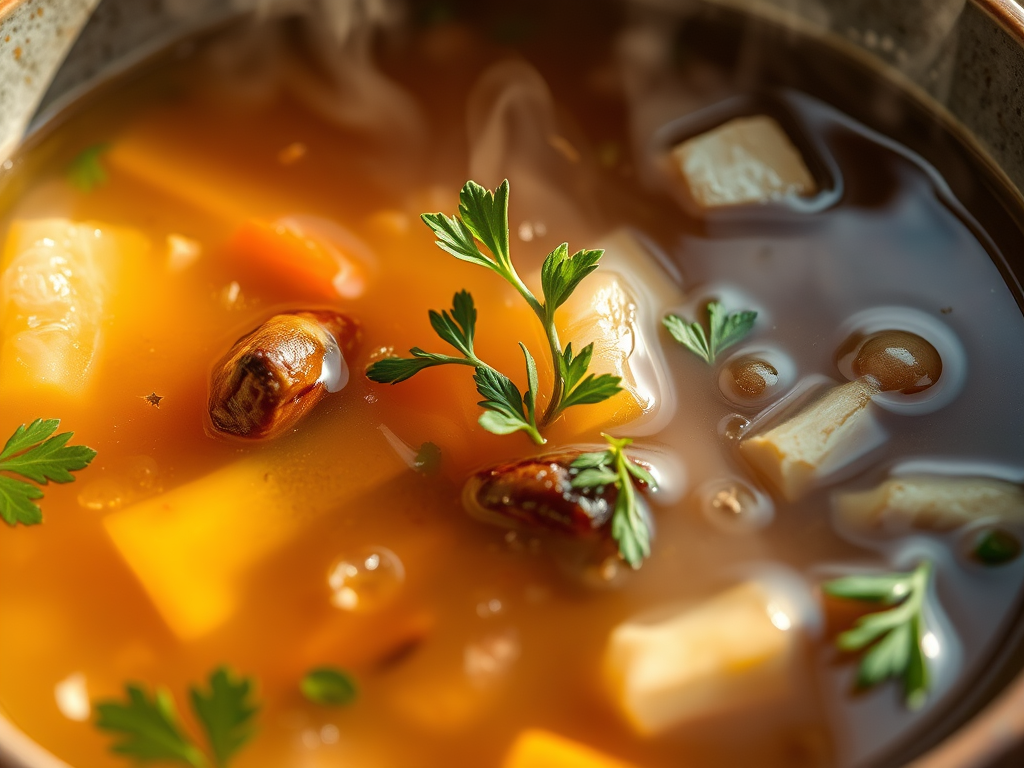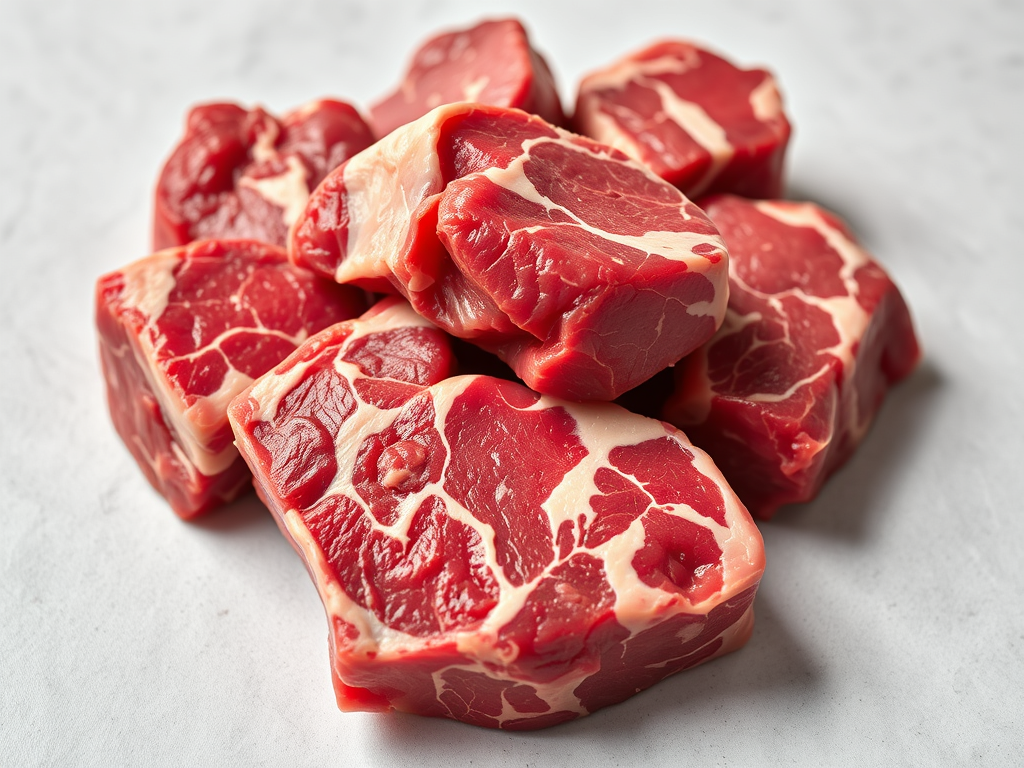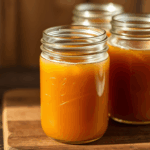The Benefits of Bone Broth (And a Recipe)
There’s something deeply comforting about a pot of bone broth simmering on the stove. Its rich aroma fills the kitchen, and the gentle bubbling feels like a hug for your soul. The benefits of bone broth extend beyond the cozy vibes, as it has a long history as a nutrient-packed staple in traditional kitchens across the world. These numerous benefits of bone broth make it a must-have in any diet.
So, what exactly is bone broth? It’s a slow-cooked liquid made by simmering animal bones, connective tissue, and aromatics for hours—even days. This low-and-slow magic coaxes out minerals, collagen, and all sorts of goodness from the bones, resulting in a flavorful, nutrient-rich broth, showcasing the advantages of bone broth in various aspects.

At Broken P Ranch, I love sharing recipes that connect us to simpler times and wholesome living. Bone broth is one of those time-honored traditions that deserves a place in every kitchen, whether you sip it by the mugful or use it to elevate soups and stews. Let’s dive into the benefits of bone broth and why it’s so good for you, how it’s different from stock or broth, and how to make your batch at home.
Why It Deserves a Spot in Your Kitchen
Bone broth isn’t just trendy—it’s truly nourishing. Here are some benefits of bone broth to love it:
- Supports Gut Health – Gelatin in bone broth helps heal and protect your gut lining.
- Promotes Joint Health – Collagen and amino acids like glycine support healthy joints.
- Boosts Immunity – Minerals like calcium, magnesium, and phosphorus strengthen your immune system.
- Aids Hydration – Sip it as a warm drink to replenish electrolytes naturally.
- Nourishes Skin, Hair & Nails – Collagen supports skin elasticity and promotes healthy hair growth.
- Reduces Waste – Bone broth is the ultimate way to use up leftover bones and veggie scraps.
It’s a budget-friendly, powerhouse food that fits beautifully into a homesteading lifestyle.
What’s the Difference in Broth Types?
You’ve probably heard these terms used interchangeably, but they’re not the same. Here’s how they differ:
| Type | Cook Time | What’s In It | Best For |
|---|---|---|---|
| Broth | 45 min–2 hours | Mostly meat with some bones | Light soups, sipping |
| Stock | 2–4 hours | Bones and connective tissues | Sauces, stews, and gravies |
| Bone Broth | 12–48 hours | Bones, joints, connective tissue | Sipping, exploring the benefits for gut health, rich soups |
Bone broth’s long simmering time extracts maximum nutrients and collagen, giving it a rich, gelatinous texture when cooled.

How to Make Bone Broth at Home
Making bone broth is easier than you think. All you need is a big pot, some bones, and time. Here’s my favorite method that unlocks the benefits found in bone broth ingredients:
PrintNourishing Homemade Bone Broth
This slow-simmered broth is packed with nutrients and flavor, perfect for sipping or using as a base for your favorite soups and stews.
- Prep Time: 10 minutes
- Cooling: 30 minutes
- Cook Time: 24 hours
- Total Time: 1 day 40 minutes
- Yield: About 3 QT 1x
- Category: Beverage, Soup Base
- Method: Simmering
- Cuisine: Traditional, Homestead
- Diet: Gluten Free
Ingredients
-
2-3 lbs beef bones (marrow, knuckle, or a mix) OR chicken carcass/bones
-
2 carrots, roughly chopped
-
2 celery stalks, roughly chopped
-
1 onion, quartered
-
3-4 garlic cloves, smashed (optional)
-
2 tablespoons apple cider vinegar (helps extract minerals)
-
1-2 bay leaves
-
10-12 cups filtered water (enough to cover bones)
-
Fresh herbs like parsley or thyme (optional)
-
Salt and pepper to taste (add at the end)
Instructions
-
Prep Bones (Optional) – Roast beef bones at 400°F for 30 minutes to deepen the flavor.
-
Assemble Ingredients – Place bones, vegetables, vinegar, and bay leaves in a stockpot or slow cooker. Cover with water.
-
Simmer Low & Slow –
-
On stovetop: bring to a boil, reduce to low, and simmer uncovered 12–24 hours.
-
In slow cooker: set on low for 18–24 hours.
-
In Instant Pot: pressure cook on high for 2 hours.
-
-
Strain & Store – Strain broth through a fine mesh sieve into jars or containers. Cool completely before refrigerating or freezing.
-
Enjoy – Sip it warm or use it in recipes!
Notes
-
For extra collagen, add chicken feet or joints.
-
Broth should gel when chilled—don’t worry if it doesn’t; it’s still nourishing!
-
Use high-quality bones from grass-fed or pasture-raised animals for the best nutrition.
Freezing & Storing Bone Broth
- Refrigerate: Keeps up to 5 days.
- Freeze: Store in mason jars (leave headspace) or silicone trays for easy portioning. Lasts up to 6 months.
- Reheat: Gently warm on the stove—avoid boiling to preserve nutrients.
Creative Ways to Use Bone Broth
- Sip as a warming drink with a pinch of sea salt.
- Use as the base for soups, stews, and gravies.
- Cook grains like rice or quinoa in broth for extra flavor, enhancing the benefits of bone broth.
- Add a splash to sautéed greens for a nutrient boost.
- Replace water in mashed potatoes or stuffing with bone broth for depth.
Bone Broth FAQs
Can I reuse the bones?
Yes! The second batch will be lighter but still packed with nutrients, continuing the benefits of bone broth.
Why apple cider vinegar?
It helps draw out minerals and collagen from the bones.
What if my broth doesn’t gel?
No worries—it’s still nutritious. For next time, try adding more collagen-rich bones like chicken feet or knuckles.
Can I add herbs or spices?
Absolutely! Thyme, rosemary, ginger, and turmeric are great additions for flavor and extra health benefits.

